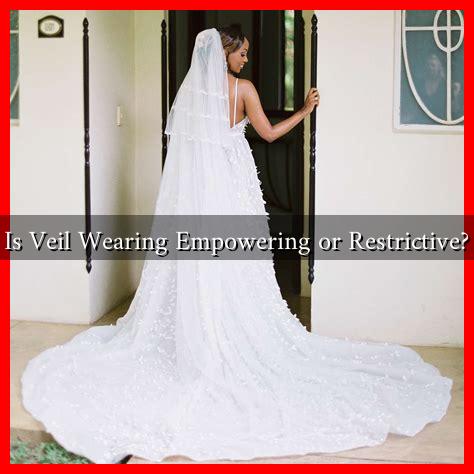-
Table of Contents
Is Veil Wearing Empowering or Restrictive?
The debate surrounding the wearing of veils, particularly in the context of Islamic culture, has been a contentious issue for decades. While some view it as a symbol of empowerment and religious identity, others perceive it as a form of oppression and restriction. This article aims to explore both perspectives, providing insights into the cultural, social, and psychological implications of veil wearing.
The Empowering Perspective
For many women, wearing a veil is a deeply personal choice that reflects their faith and cultural identity. Here are some reasons why veil wearing is often seen as empowering:
- Religious Expression: For Muslim women, the veil can be a way to express their devotion to God. It serves as a physical manifestation of their faith and commitment to Islamic principles.
- Autonomy and Choice: Many women assert that choosing to wear a veil is an exercise of their autonomy. They argue that it allows them to define their identity on their own terms, rather than conforming to societal expectations.
- Protection from Objectification: Some women believe that wearing a veil helps them avoid being objectified based on their physical appearance. By covering their hair and body, they feel they can shift the focus from their looks to their intellect and personality.
- Community and Solidarity: Wearing a veil can foster a sense of belonging among women who share similar beliefs. It can create a bond of solidarity and support within the community.
Case studies have shown that women who wear veils often report feelings of empowerment. For instance, a study conducted by the Pew Research Center found that 62% of Muslim women in the U.S. who wear the hijab feel it is a source of pride and identity.
The Restrictive Perspective
Conversely, many critics argue that veil wearing can be restrictive and oppressive. Here are some of the key arguments against it:
- Societal Pressure: In some cultures, women may feel compelled to wear a veil due to societal or familial pressure, rather than personal choice. This can lead to feelings of resentment and lack of agency.
- Gender Inequality: Critics argue that the practice of veiling is often rooted in patriarchal interpretations of religion, which can perpetuate gender inequality. In some cases, women may be punished for not adhering to these norms.
- Barriers to Participation: In certain contexts, wearing a veil can limit women’s participation in public life, including education and employment opportunities. This can hinder their ability to achieve personal and professional goals.
- Misinterpretation and Stereotyping: Women who wear veils may face discrimination and stereotyping, which can lead to social isolation and mental health issues.
For example, a report by the European Network Against Racism highlighted that Muslim women wearing veils often experience higher rates of discrimination in the workplace, which can limit their career advancement opportunities.
Finding a Middle Ground
The discussion around veil wearing is complex and multifaceted. It is essential to recognize that the experience of wearing a veil can vary significantly among individuals. Some women may find empowerment in their choice to wear a veil, while others may feel constrained by it. The key lies in understanding the context and respecting individual choices.
Moreover, it is crucial to promote dialogue and education about the diverse experiences of women who wear veils. Initiatives that encourage intercultural understanding can help dismantle stereotypes and foster a more inclusive society.
Conclusion
In conclusion, the question of whether veil wearing is empowering or restrictive does not have a one-size-fits-all answer. It is a deeply personal choice influenced by various factors, including culture, religion, and individual circumstances. While some women find strength and identity in their veiling practices, others may experience limitations and societal pressures. Ultimately, fostering an environment of respect and understanding is essential for empowering women to make choices that align with their beliefs and values.
For further reading on this topic, you can explore resources from organizations like Pew Research Center and European Network Against Racism.

